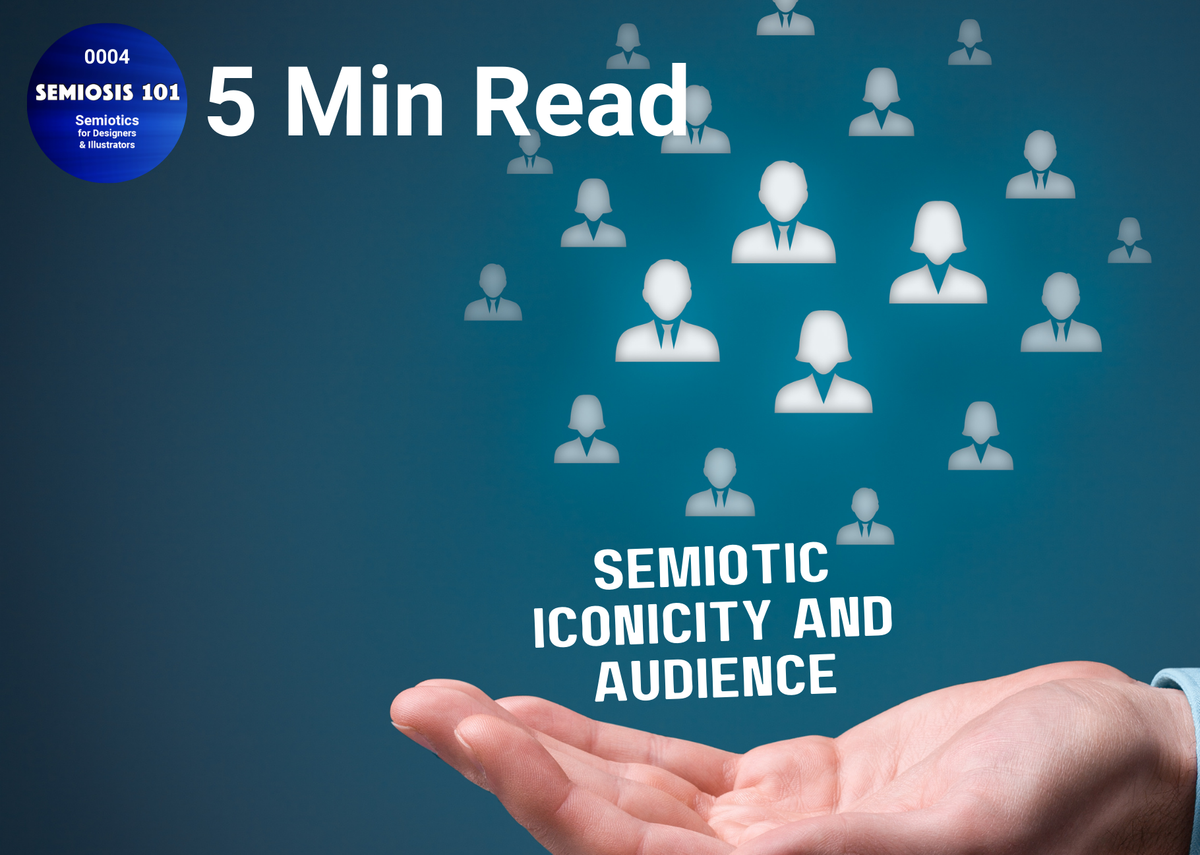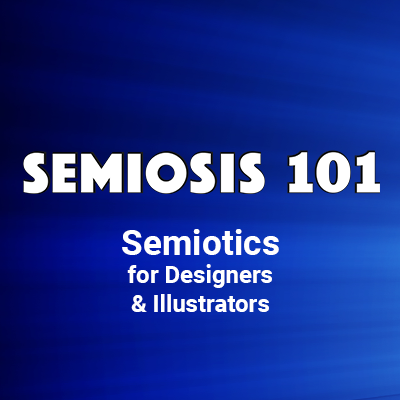BLOG 04: Semiotic Iconicity and Audience

Semiosis 101 - 5 minute semiotic read
By manipulating semiotic Iconic representation of the concept in your ideation phase, will help you improve how you visually HOOK your target audience’s attention.
To explain how to HOOK and begin to retain the attention of the target audience we will now dig deeper into the lowest level of pragmatic semiotic representation …Iconic. The Icon in a Peircean context differs from your understanding and application of the word ”icon” or “iconic." As a designer or illustrator it is important to begin with
an open mind, as words in different socio-cultural contexts have different definitions. Therefore you must 'bracket out' any other definitions while we explore Iconicity in a semiotic context. Iconicity is the first starting point of semiotic communications as far as graphic designers and illustrations concerned.
This Iconic representation of the concept is only one dimensional. So how does this help?
Iconic representation is the lowest level at which a semiotic sign is perceived by our target audience. This is when interpretation from your target audience commences.
Within Semiosis, interpretation is an integral part of successful sign-action. The concept and its representation in the chosen visual language, can only be effective if the interpretation leads back to the concept.
That semiotic sign-action flow is dependent on you, as the creative, to craft a visual language that will connect with your target audience. Iconic representation is where you begin to craft how to visually HOOK your audience’s attention.
The audience’s attention is obviously controlled through your aesthetic choices of the visual language. In your aesthetic choices sign-action is working whether it is intentionally encoded, or not.
The benefit of embracing semiotics when crafting your visual language strengthens effective connotative meaning in your work.
Commercially, semiotics helps you designers and illustrators to make the audience work that little bit harder, to get more reward from what they are looking at. This attention can then begin communicating the concept(s) from your client’s brief, in a more targeted and engaging way.
Commercially, your client is obviously who you are working for. The brief is what you are working from, and in the brief is the concept(s) (messages) that your design or illustration needs to visually communicate.
Therefore there is a target audience who needs to be receiving that messaging to react to it in the way your client desires. To visually communicate that successful reaction, you have got to research who that target audience is, what makes them tick and what makes them… connectable.
You cannot HOOK the audience in without first understanding them.
When it comes to HOOKing the attention of a target audience, we are focussing on connotative rather than denotative semiotic meaning-making.
We are talking in the realms here of branding and advertising, where the visual communication of concepts are more subtle than directly obvious. We are not talking about a designed leaflet which declares, “buy your baked beans at the local supermarket.”
If a design or image merely communicates at the denotative level, then the audience will only see what IT is at an obvious level.
Then move on.
But in advertising, they don’t say “buy beans” and the target audience then buys beans. They are not unthinking drones.
Advertisers use different ways to tell a story, a narrative around the concept they wish to share, to get an emotional response from their audience.
The semiotic power of Iconicity in visual communication is that the visual resemblance to something the audience already has experience of kick starts the semiotic sign. This is the first step away from denotative to connotative meaning.
When we discuss Iconic representation in Pragmatic semiotics within design or illustration, we are talking about Iconically HOOKing the audience’s attention through utilising shared visual qualities (line, shape, colour, etc.) with things they know or recognise. Peirce says "Nothing is a [semiotic] sign unless it is interpreted as a sign.” It is at the Iconic level that this interpretation begins.
If the audience doesn’t recognise them, then semiotics does not get a chance to work. If they do, but the Iconic elements lead to a misinterpretation of the concept then the aesthetic fails. Sign-action needs careful crafting.





